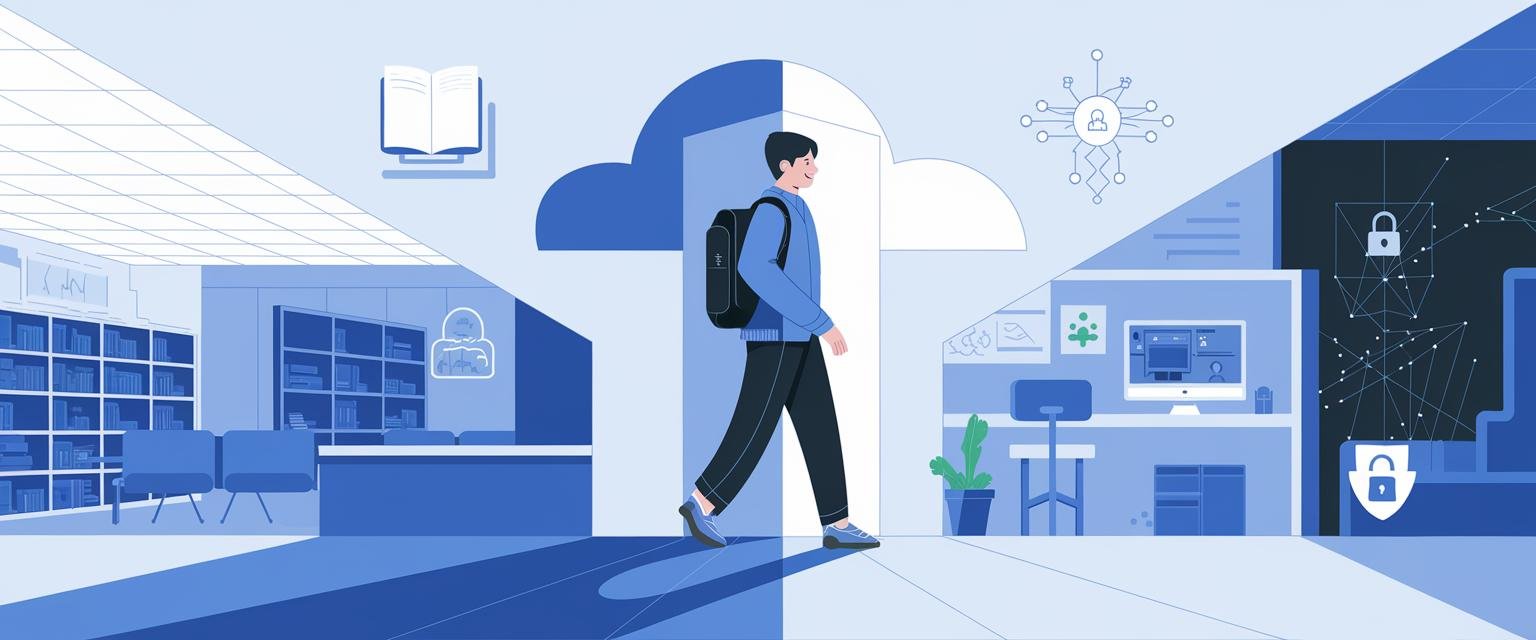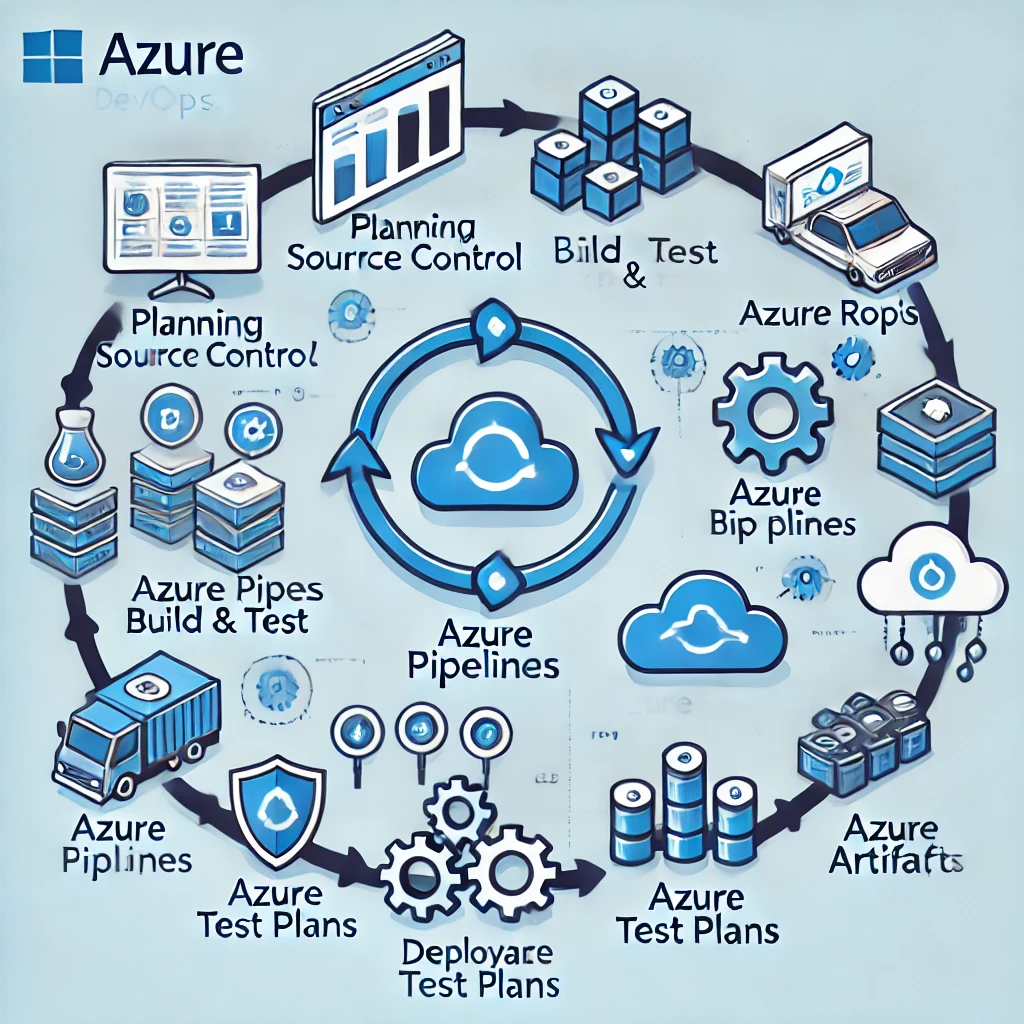Imagine building a house without any interior walls—chaotic and completely impractical, right? That’s exactly what managing cloud resources without a Virtual Private Cloud (VPC) feels like.
When I joined my first tech company after graduating from Jadavpur University, I was thrown into the deep end to set up cloud infrastructure. I remember staring at the AWS console, completely overwhelmed by all the networking options. That first VPC I configured was a mess – I had security groups that blocked legitimate traffic, subnets with overlapping IP ranges, and worst of all, accidentally exposed databases to the public internet. Yikes!
A Virtual Private Cloud is essentially your own private section of a public cloud where you can launch resources in a virtual network that you define. It gives you control over your virtual networking environment, including IP address ranges, subnets, route tables, and network gateways. Think of it as creating your own private, secure neighborhood within a busy city.
Let me walk you through everything I’ve learned since those early cloud networking mistakes to help you build a secure, efficient VPC setup, whether you’re preparing for your first tech job or looking to level up your cloud skills at Learn from Video Lectures.
TL;DR: VPC Setup Best Practices
Short on time? Here are the seven critical best practices for VPC success:
- Plan your IP address space generously (use at least a /16 CIDR block)
- Implement proper subnet segmentation (public, private app, private data)
- Apply multiple security layers (NACLs, security groups, principle of least privilege)
- Design for high availability across multiple availability zones
- Enable VPC flow logs for security monitoring and troubleshooting
- Use Infrastructure as Code (IaC) to manage your VPC configuration
- Optimize for cost with strategic use of VPC endpoints and NAT gateways
Now, let’s dive into the details…
What is a Virtual Private Cloud and Why Does it Matter?
A Virtual Private Cloud (VPC) is essentially a private section of a public cloud that gives you your own isolated slice of the cloud provider’s infrastructure. It’s like renting an apartment in a building but having complete control over who enters your space and how your rooms are arranged.
The beauty of a VPC is that it combines the accessibility and scalability of public cloud services with the security and control of a private network. You get to define your network topology, control traffic flow, and implement multiple layers of security.
Why should you care about VPCs? Three reasons:
- Security: VPCs let you isolate your resources and control exactly what traffic goes where.
- Compliance: Many industries require isolation of sensitive workloads, which VPCs make possible.
- Resource Organization: VPCs help you logically organize your cloud resources by project, department, or environment.
Key VPC Terminology You Need to Know
Before we dive into setup, let’s get familiar with some key terms:
- Subnets: Subdivisions of your VPC network. Public subnets can connect to the internet, while private subnets are isolated.
- CIDR Blocks: Classless Inter-Domain Routing blocks are the IP address ranges you’ll use (like 10.0.0.0/16).
- Route Tables: These control where network traffic is directed.
- Internet Gateway (IGW): Allows communication between your VPC and the internet.
- NAT Gateway: Enables instances in private subnets to connect to the internet without being directly exposed.
- Security Groups: Instance-level firewall rules that control inbound and outbound traffic.
- Network ACLs: Subnet-level firewall rules that provide an additional layer of security.
Key Takeaway: A VPC provides isolation, security, and control for your cloud resources. Understanding the fundamental components (subnets, CIDR blocks, gateways) is essential for creating a well-architected cloud environment.
Setting Up Your First AWS Virtual Private Cloud
I’ll focus primarily on AWS since it’s the most widely used cloud platform, but the concepts apply across providers like Azure, Google Cloud, and Alibaba Cloud.
Step 1: Create the VPC
- Log into your AWS Management Console
- Navigate to the VPC service
- Click “Create VPC”
- Give your VPC a meaningful name (like “Production-VPC” or “DevTest-VPC”)
- Set your CIDR block – 10.0.0.0/16 is a good starting point, giving you 65,536 IP addresses
- Enable DNS hostnames (this lets AWS assign DNS names to EC2 instances)
For IPv4 CIDR blocks, I usually follow these rules:
- 10.0.0.0/16 for production
- 10.1.0.0/16 for staging
- 10.2.0.0/16 for development
This makes it easy to remember which environment is which, and avoids IP conflicts if you ever need to connect these environments.
Step 2: Create Subnets
Now, let’s divide our VPC into subnets across multiple Availability Zones for high availability:
- In the VPC Dashboard, select “Subnets” and click “Create subnet”
- Select your newly created VPC
- Name your first subnet (e.g., “Public-Subnet-1a”)
- Choose an Availability Zone (e.g., us-east-1a)
- Set the CIDR block (e.g., 10.0.1.0/24 for the first public subnet)
- Click “Create”
Repeat this process to create at least these subnets:
- Public Subnet in AZ 1: 10.0.1.0/24
- Private Subnet in AZ 1: 10.0.2.0/24
- Public Subnet in AZ 2: 10.0.3.0/24
- Private Subnet in AZ 2: 10.0.4.0/24
This multi-AZ design ensures your applications can survive a data center outage.

Step 3: Set Up Internet Gateway and Route Tables
For your public subnets to access the internet:
- Create an Internet Gateway
- Go to “Internet Gateways” and click “Create”
- Name it (e.g., “Production-IGW”)
- Click “Create” and then “Attach to VPC”
- Select your VPC and click “Attach”
- Create and configure a public route table
- Go to “Route Tables” and click “Create”
- Name it (e.g., “Public-RT”)
- Select your VPC and create
- Add a route: Destination 0.0.0.0/0, Target your Internet Gateway
- Associate this route table with your public subnets
- Create a private route table
- Follow the same steps but name it “Private-RT”
- Don’t add a route to the internet gateway
- Associate with your private subnets
At this point, your public subnets can reach the internet, but your private subnets cannot.
Step 4: Create a NAT Gateway (For Private Subnet Internet Access)
Private subnets need to access the internet for updates and downloads, but shouldn’t be directly accessible from the internet. Here’s how to set that up:
- Navigate to “NAT Gateways” and click “Create NAT Gateway”
- Select one of your public subnets
- Allocate a new Elastic IP or select an existing one
- Create the NAT Gateway
- Update your private route table to include a route:
- Destination: 0.0.0.0/0
- Target: Your new NAT Gateway
Remember that NAT Gateways aren’t free, so for development environments, you might use a NAT Instance (an EC2 instance configured as a NAT) instead.
Step 5: Configure Security Groups
Security groups are your instance-level firewall:
- Go to “Security Groups” and click “Create”
- Name it something descriptive (e.g., “Web-Server-SG”)
- Add inbound rules based on the principle of least privilege:
- HTTP (80) from 0.0.0.0/0 for web traffic
- HTTPS (443) from 0.0.0.0/0 for secure web traffic
- SSH (22) only from your IP address or VPN
- Create the security group
I once made the mistake of opening SSH to the world (0.0.0.0/0) on a production server. Within hours, our logs showed thousands of brute force attempts. Always restrict administrative access to known IP addresses!
Key Takeaway: Follow a systematic approach when creating your VPC – start with the VPC itself, then create subnets across multiple availability zones, set up proper routing with internet and NAT gateways, and finally secure your resources with appropriate security groups. Always architect for high availability by using multiple availability zones.
7 Best Practices for VPC Setup Success
After setting up dozens of VPCs for various projects and companies, I’ve developed these best practices to save you from common mistakes.
1. Plan Your IP Address Space Carefully
Running out of IP addresses is painful. I once had to redesign an entire VPC because we didn’t allocate enough address space for our growing microservices architecture.
- Use at least a /16 CIDR block for your VPC (e.g., 10.0.0.0/16)
- Use /24 or /22 for subnets depending on how many instances you’ll need
- Reserve some subnets for future expansion
- Document your IP allocation plan
2. Use Proper Subnet Segmentation
Don’t just create public and private subnets. Think about your specific needs:
- Public subnets: For load balancers and bastion hosts
- Private app subnets: For your application servers
- Private data subnets: For databases and caches
- Intra-VPC subnets: For services that only need to communicate within the VPC
This separation gives you more granular security control and makes troubleshooting easier.
3. Implement Multiple Layers of Security
Defense in depth is key to cloud security:
- Use Network ACLs at the subnet level for broad traffic control
- Use Security Groups for instance-level security
- Create different security groups for different functions (web, app, database)
- Follow the principle of least privilege – only open the ports you need
- Use AWS Network Firewall for advanced traffic filtering
Here’s a security group configuration I typically use for a web server:
| Port | Source | Description |
|---|---|---|
| 80 (HTTP) | 0.0.0.0/0 | Web traffic |
| 443 (HTTPS) | 0.0.0.0/0 | Secure web traffic |
| 22 (SSH) | Bastion Security Group ID | Admin access only from bastion host |
4. Design for High Availability
Even AWS data centers can fail:
- Deploy resources across multiple Availability Zones
- Set up redundant NAT Gateways (one per AZ)
- Use Auto Scaling Groups that span multiple AZs
- Consider multi-region architectures for critical workloads
5. Implement VPC Flow Logs
VPC Flow Logs are like security cameras for your network:
- Go to your VPC dashboard
- Select your VPC
- Under “Flow Logs,” click “Create flow log”
- Choose “All” for traffic type
- Select or create an S3 bucket to store logs
- Create the flow log
These logs have helped me identify unexpected traffic patterns and potential security issues numerous times.
6. Use Infrastructure as Code (IaC)
Manual configuration is error-prone. Instead:
- Use AWS CloudFormation or Terraform to define your VPC
- Store your IaC templates in version control
- Apply changes through automated pipelines
- Document your architecture in the code
A simple Terraform configuration for a VPC might look like this:
resource "aws_vpc" "main" {
cidr_block = "10.0.0.0/16"
enable_dns_support = true
enable_dns_hostnames = true
tags = {
Name = "Production-VPC"
}
}
resource "aws_subnet" "public_1" {
vpc_id = aws_vpc.main.id
cidr_block = "10.0.1.0/24"
availability_zone = "us-east-1a"
map_public_ip_on_launch = true
tags = {
Name = "Public-Subnet-1a"
}
}7. Optimize for Cost
VPCs themselves are free, but related resources aren’t:
- Use a single NAT Gateway for dev environments
- Shut down non-production environments during off-hours
- Use VPC Endpoints for AWS services to reduce NAT Gateway costs
- Right-size your instances and use Reserved Instances for predictable workloads
I once reduced a client’s cloud bill by 40% just by implementing VPC Endpoints for S3 and DynamoDB, eliminating costly NAT Gateway traffic.
Key Takeaway: Successful VPC management requires thoughtful planning of IP space, proper network segmentation, multi-layered security, high availability design, comprehensive logging, infrastructure as code, and cost optimization. These practices will help you build secure, reliable, and cost-effective cloud environments.
Advanced VPC Configurations
Once you’ve mastered the basics, here are some advanced configurations to consider.
Connecting to On-Premises Networks
Many organizations need to connect their cloud and on-premises environments:
AWS Site-to-Site VPN
- Create a Virtual Private Gateway (VPG) and attach it to your VPC
- Set up a Customer Gateway representing your on-premises VPN device
- Create a Site-to-Site VPN connection
- Update your route tables to route on-premises traffic to the VPG
AWS Direct Connect
- For higher bandwidth and more consistent performance
- Requires physical connection setup with AWS partner
- More expensive but provides dedicated connectivity
Connecting Multiple VPCs
As your cloud footprint grows, you’ll likely need multiple VPCs:
VPC Peering
- Good for connecting a few VPCs
- Each connection is one-to-one
- No transitive routing (A can’t talk to C through B)
AWS Transit Gateway
- Hub-and-spoke model for connecting many VPCs
- Supports transitive routing
- Simplifies network architecture
- Better for large-scale environments

VPC Endpoints for AWS Services
VPC Endpoints let your resources access AWS services without going through the public internet:
Gateway Endpoints (for S3 and DynamoDB)
- Add an entry to your route table
- Free to use
Interface Endpoints (for most other services)
- Create elastic network interfaces in your subnets
- Incur hourly charges and data processing fees
- Provide private IP addresses for AWS services
Kubernetes in VPC (EKS)
If you’re using Kubernetes, Amazon EKS integrates well with VPCs:
- Create a VPC with both public and private subnets
- Launch EKS control plane
- Configure EKS to place worker nodes in private subnets
- Set up an Application Load Balancer in public subnets
- Configure necessary security groups
The AWS Load Balancer Controller automatically provisions ALBs or NLBs when you create Kubernetes Ingress resources, making the integration seamless.
Key Takeaway: Advanced VPC features like Site-to-Site VPN, Transit Gateway, VPC Endpoints, and Kubernetes integration help you build sophisticated cloud architectures that connect to on-premises environments, span multiple VPCs, access AWS services privately, and support container orchestration platforms.
VPC Decision Tree: Choosing the Right Connectivity Option
Selecting the right connectivity option can be challenging. Use this decision tree to guide your choices:
| Requirement | Recommended Solution | Considerations |
|---|---|---|
| Connect 2-5 VPCs | VPC Peering | Simple setup, no transit routing |
| Connect 5+ VPCs | Transit Gateway | Simplified management, higher cost |
| Office to AWS (basic) | Site-to-Site VPN | Internet-based, lower cost |
| Office to AWS (critical) | Direct Connect | Dedicated connection, higher cost |
| Access to AWS services | VPC Endpoints | Private access, reduced data charges |
Troubleshooting Common VPC Issues
Even with careful planning, you’ll likely encounter issues. Here are some common problems and solutions:
“I can’t connect to my EC2 instance”
- Check your Security Group rules (both inbound and outbound)
- Verify the instance is in a public subnet with auto-assign public IP enabled
- Ensure your route table has a route to the Internet Gateway
- Check Network ACLs for any deny rules
- Make sure you’re using the correct SSH key
“My private instances can’t access the internet”
- Verify your NAT Gateway is in a public subnet
- Check that your private subnet route table has a route to the NAT Gateway
- Ensure the NAT Gateway has an Elastic IP
- Check security groups for outbound rules
“My VPC peering connection isn’t working”
- Verify both VPCs have accepted the peering connection
- Check that route tables in both VPCs have routes to the peer VPC’s CIDR
- Ensure Security Groups and NACLs allow the traffic
- Check for overlapping CIDR blocks
“My Site-to-Site VPN connection is intermittent”
- Check that your customer gateway device is properly configured
- Verify your on-premises firewall rules
- Look for asymmetric routing issues
- Consider upgrading to Direct Connect for more stable connectivity
I once spent three days troubleshooting a connectivity issue only to discover that someone had accidentally added a deny rule in a Network ACL. Always check the simple things first!
VPC Multi-Cloud Considerations
While we’ve focused on AWS, the VPC concept exists across all major cloud providers:
- AWS: Virtual Private Cloud (VPC)
- Azure: Virtual Network (VNet)
- Google Cloud: Virtual Private Cloud (VPC)
- Alibaba Cloud: Virtual Private Cloud (VPC)
Each provider has its own terminology and specific features, but the core concepts remain the same:
| Concept | AWS | Azure | Google Cloud |
|---|---|---|---|
| Virtual Network | VPC | VNet | VPC |
| Subnet Division | Subnets | Subnets | Subnets |
| Instance Firewall | Security Groups | Network Security Groups | Firewall Rules |
| Internet Access | Internet Gateway | Default Route | Default Internet Gateway |
If you’re working in a multi-cloud environment, consider using a service mesh like Istio to abstract away some of the networking differences between providers.
Frequently Asked Questions About VPCs
What are the main benefits of using a VPC?
The main benefits include security through isolation, control over your network configuration, the ability to connect to on-premises networks, and compliance with regulatory requirements.
How do I choose the right CIDR block size for my VPC?
Consider your current and future needs. A /16 CIDR (like 10.0.0.0/16) gives you 65,536 IP addresses, which is sufficient for most organizations. If you expect massive growth, you might use a /14 or /12. If you’re creating many small VPCs, a /20 might be appropriate.
What’s the difference between Security Groups and Network ACLs?
Security Groups are stateful and apply at the instance level. If you allow an inbound connection, the return traffic is automatically allowed regardless of outbound rules. Network ACLs are stateless and apply at the subnet level. You need to explicitly allow both inbound and outbound traffic.
How do I monitor network traffic in my VPC?
Use VPC Flow Logs to capture information about IP traffic going to and from network interfaces. You can send these logs to CloudWatch Logs or S3 for analysis. For deeper inspection, consider AWS Network Firewall or third-party tools like Suricata.
How many subnets should I create in my VPC?
At minimum, create one public and one private subnet in each Availability Zone you plan to use (usually at least two AZs for high availability). For more complex applications, consider separate tiers of private subnets for application servers and databases.
Conclusion
Setting up a Virtual Private Cloud is like building the foundation for a house – get it right, and everything else becomes easier. Get it wrong, and you’ll be fighting problems for years to come.
Remember these key points:
- Plan your IP address space carefully before you start
- Design with security in mind at every layer
- Build for high availability across multiple availability zones
- Use infrastructure as code to make your setup repeatable and documented
- Implement proper logging and monitoring
- Optimize for cost where appropriate
I hope this guide helps you avoid the mistakes I made in my early cloud engineering days. A well-designed VPC will make your cloud infrastructure more secure, reliable, and manageable.
Ready to master cloud networking and land your dream job? Our comprehensive Interview Questions resource will help you prepare for your next cloud engineering interview with confidence. You’ll find plenty of VPC and cloud networking questions that hiring managers love to ask!
And if you want to take your cloud skills to the next level with hands-on guided learning, check out our Cloud Engineering Learning Path where we’ll walk you through building these architectures step by step.
Have questions about setting up your VPC? Drop them in the comments below and I’ll help you troubleshoot!













